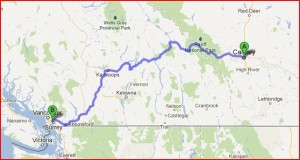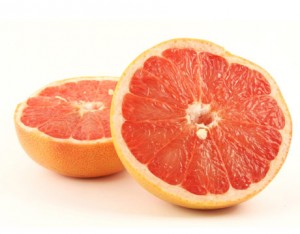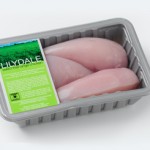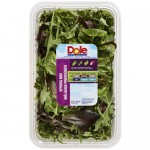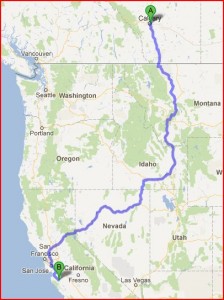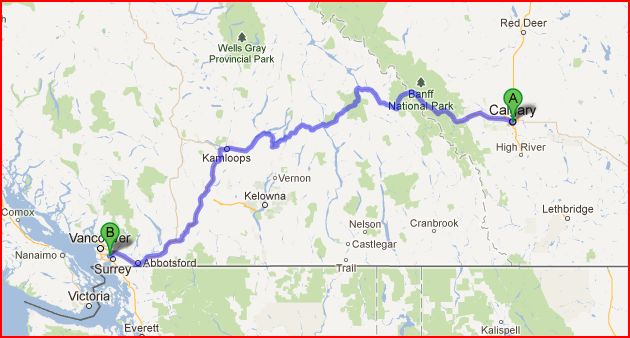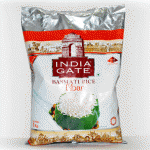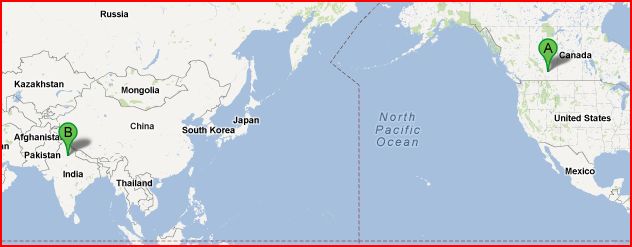When reading Manning’s article before beginning this blog I was struck by two things, the first being ‘It takes 35 calories of fossil fuel to produce one calorie of beef’ and “Food processing in the united states uses 10 calories of fossil fuel for every calorie of food it produces”. While I have long understood the inefficiencies in the way food is processed and shipped in the modern world, as well as seeing the overabundance of it that is thrown away as waste or stored as excess fat, it is easy to ignore such things due to the conveniences of supermarkets and grocery stores that are present everywhere in our cities and towns.
I knew that writing this blog would make me come face to face with this truth. So I decided to cheat. While I typically try to eat healthy I do not deny that I will turn to boxed soups and packaged dinners in a hurry, and while ordering at restaurants the origin of the food is not a deciding factor in what I buy. But for this blog I decided that for one day I would limit my diet to whole foods with limited processing that were surely better on the environment. This way I could convince myself that with some effort I could stick to this diet consistently and have a limited impact on the environment. I cheated on this project, but it didn’t work. I was shocked that when I split my environmental meals down and discovered where the ingredients originated and what they were packaged in, as well as the vast distances some of them were shipped, I still as a consumer had used thousands of litres of hydrocarbons and massive amounts of petroleum material. In transportation of the products alone over 1200 litres, as a very rough estimate, of diesel were burned to bring me food for a day. Granted this amount can be split among the amount of food being transported by one truck or ship, and the amount of food within each package, but the fact still is that hydrocarbons fuel our modern day food markets, and it is very difficult as a typical consumer to avoid the negative impact this causes on the environment.
Whats for Breakfast?
Greek yogurt with raspberries and granola
Food Breakdown:
Whats in it?
Liberte Greek Yogurt: Skim Milk and Probiotic Cultures
Driscoll’s Raspberries: Raspberries
Nature’s Path Pumpkin Flax Granola: Rolled oats, evaporated cane juice, soy oil, brown rice flour, pumpkin seeds, flax seeds, oat syrup solids, sea salt, molasses, and cinnamon
Oil In Production?
Greek Yogurt: Oil was used in for the dairy farms in the production of skim milk. Oil would have to be used to run tractors at the farm to harvest cattle feed and other tasks, in power housing and milking facilities for the cattle, and in power plants that processed the whole milk into skim milk.(*assumed, but plants may also run on other fossil fuels or hydroelectricity)
Raspberries: Oil was used to power farming equipment. Also used to power plant facilities to clean and sort berries (*assumed, but plants may also run on other fossil fuels or hydroelectricity)
Pumpkin Flax Granola: Oil used to power farming equipment for raw ingredients. Greenhouses and plants are run on hydroelectricity.
Oil in Packaging?
Plastic is made from hydrocarbons that are created from petroleum or natural gas. Different Plastic types are created by different combinations of hydrocarbon molecules. The plastic packaging of the yogurt and raspberries are essentially all oil.
The oil used in the cardboard granola packaging is dependant on the type of facility it is created in, however hydrocarbons are also present in the plastic bags within the cardboard packaging.
Oil In Transportation?
Liberte Greek Yogurt: Produced in Saint- Hyacinthe Quebec; transported to Calgary Alberta where I purchased it. Total of 3583 km of travel
Driscoll’s Raspberries:
Growing Seasons for Driscoll’s raspberry farms:
- Assumed berries eaten came from Oxnard California (best case scenario as they are the closest to Calgary, feasible as the berries are produced year round)
Total distance traveled: 2579 km
Pumpkin Flax Granola:
Produced in Delta, BC; total distance traveled957 km
Snack Time:
California Grapefruit:
Oil in Production?
Oil used to power farming equipment (tractors, sprayers, harvesters etc)
Oil in Packaging?
Hydrocarbons are used to create the plastic netting that the grapefruits are kept in
Oil in Transportation?
The grapefruit travelled approximately 2500km from California to Calgary for me to purchase it.
Whats for Lunch?
Chicken salad with lettuce, mini bell peppers, and balsamic dressing
Food Breakdown:
Whats in it?
Lillydale Chicken breasts: Chicken
Dole Spring Mix: Assorted lettuce and herbs
Mini Bell Peppers: bell peppers
Balsamic Dressing: Balsamic vinegar, olive oil, sugar, assorted herbs and preservatives
Oil In Production?
Chicken Breasts: Hydrocarbons are used to run farm equipment at the poultry farms. Assume transport from farms to nearest processing facility <200km as Lillydale Chicken is an Alberta’s farmer cooperative.
Salad Mix: Dole operates salad and vegetable plants in Yuma, Arizona; Soledad, California; Springfield Ohio, and North Carolina. These operations would have used oil and gas in the farm equipment (seeders, fertilizers, plows). Oil is also used in the farm equipment for the Mini Bell Peppers
Balsamic Dressing: For the balsamic vinegar oil is used for the farm equipment that process the grapes, as well as in the transportation of the grapes to the facility that processes them into vinegar. Farm equipment also needs to be powered to grow the herbs. Sugar will also have been grown and processed with the use of hydrocarbon powered equipment, as well as transported to the facility that packages the dressing.
Oil in Packaging?
Chicken Breasts: Packaging for the lilydale chicken breasts is made of Polystyrene foam and plastic. The foam is made from a liquid hydrocarbon manufactured from petroleum by a chemical company. (side note: no organism has shown the ability to biodegrade polystyrene foam, making it a common source of solid pollution). The plastic is also created by hydrocarbons, and is present in the Balsamic Dressing bottle, in the Mini Bell Pepper bag, and in the Spring Salad Mix container.
Oil in Transportation?
Lillydale Chicken Breasts: Chickens are raised and butchered by alberta farmers, assume distance transported <500km
Salad Mix: Closest Dole Salad Mix facility is in Soledad California. Assume Mix bought in Calgary came from California. Total Distance traveled 2556 km
Mini Bell Peppers: Grown in Delta BC by Windsetfarms company. Total distance traveled to Calgary is 957 km.
Balsamic Vinegar: Packaged in Toronto Ontario, total distance traveled 3235 km
Whats for Dinner?
Steak and rice with spring mix salad
Food Breakdown:
Oil in Production:
Steak: The steak was purchased locally, but hydrocarbons are assumed to be used in all farming equipment where the cattle were raised. This would include the equipment used to harvest and transport cattle feed, as well as that tended directly to the cattle.
India Gate Rice: Information on product difficult to find, found that it was ‘tended near the foothills of the Himalayas’. Assumption is hydrocarbons played a part in fueling vehicles to seed, and tend to rice during the farming stage.
Dole Spring Mix: (see lunch)
Oil in Packaging:
Steak: The steak was packaged classically with a foam base and plastic wrap. Both of these materials are petroleum based.
India Gate Rice: The rice is in a plastic bag, made from hydrocarbons.
Dole Spring Salad Mix: Container is also made from plastic.
Oil in Transportation:
Steak: Even assuming the steak was purchased from local farms there is still petroleum involved the transportation of both the cattle to the butcher and the butcher to local markets. Assume total distance transported is <500km.
India Gate Rice: The distance that the rice must have had to travel from where it originated to Calgary is enormous. As the crow flies it is approximately 11,000 km, but that does not account for deviation of major roadways and shipping routes.
Dole Spring Salad Mix: (see lunch)
Distance traveled is 2556 km from California
